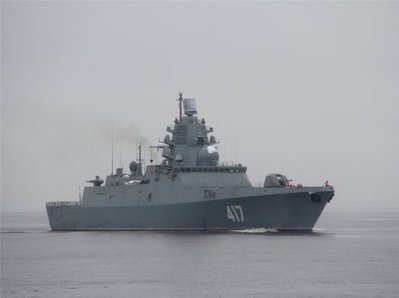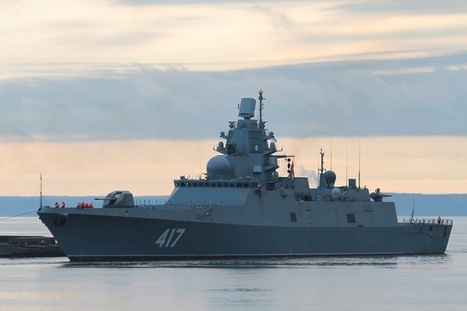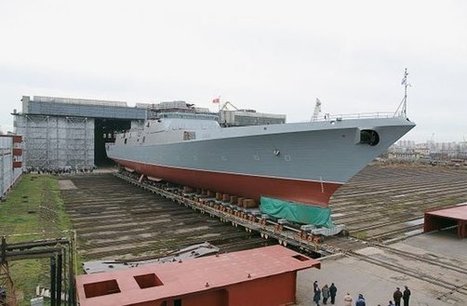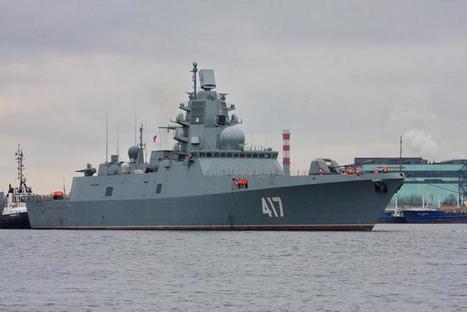The Central Naval Portal (CNP) has learned that an accident involving an engine on the new frigate "Admiral Flota Gorshkov", built at Northern Shipyard for the Russian Navy, was caused by the failure of a control system.
A CNP journalist learned from the Saturn Scientific Production Association, which is performing a survey and subsequent repairs of the engine, that the primary theory behind the failure was abnormal performance of the control system which led to the engine being flooded with fuel, after which it caught fire.
The fact that the engine on the Russian Project 22350 frigate "Admiral Gorshkov" required repairs was reported on December 29, 2014. On December 17, Northern Shipyard announced it was accepting bids for a 24-million-ruble contract for disassembling and surveying the ship's gas turbine engine.
According to a Saturn official, an assessment of the loss and inspection of the damaged engine pieces will last until March 2015 as company workers are not familiar with the engine's design. It is too early to announce when repairs will be completed and when fully operational engine pieces will be available.
The accident theory has been confirmed by another CNP source within the shipbuilding industry who has information about the accident. "The fuel pump did not shut off in time. There was a surge, and blades in the engine were damaged by the fire. The turbine has been removed and shipped to Rybinsk (location of Saturn Scientific Production Association - ed.) for repairs," the source said, noting that this occurred in September 2014.
Additionally, similar information has been reported by yet another knowledgeable shipbuilding industry source. He said that the control system failure could have been the result of a design error. "The turbine needs to undergo capital repairs; the blades were damaged by the fire. The problem was with the control system's performance. It was, most likely, a design error," he explained.
This opinion is shared by a Northern Shipyard employee. "The control system malfunctioned even though it functioned normally prior to this," the company specialist noted.
The design of the frigate engine's control system is Avrora Scientific Production Association Concern. Avrora informed CNP that the customer has not contacted the company regarding any complaints resulting from the mishap and pointed out that talking about the causes of the mishap can only be done after an official conclusion is made by experts.
Northern Shipyard's press office claims that there have been and currently are no problems with the ship or its equipment. "Our position is very simple. 'Gorshkov' completed the first phase of testing. And that's our position," stated the press office, adding that during the sea trials, the ship demonstrated specified numbers in accordance with technical specifications.
The fire-damaged M90FR gas turbine engine was developed and built at Saturn Scientific Production Association in cooperation with the Ukrainian company Zorya-MashProyekt. The Ukrainian company's press office told CNP that it had not heard about any problem with the Russian ship's engine and that no one had consulted the company regarding repairs.
Afterwards, CNP learned that the frigate's damaged engine was replaced with a duplicate engine from another ship of the same class - "Admiral Flota Kasatonov", which is also being built at Northern Shipyard. This was done in order to not delay factory sea trials of "Gorshkov".

|
Scooped by Patrick H. |
No comment yet.
Sign up to comment



 Your new post is loading...
Your new post is loading...













Ce sérieux incident avait eu lieu en décembre dernier :
http://www.scoop.it/t/newsletter-navale/p/4034399109/2014/12/30/la-nouvelle-fregate-russe-tete-de-serie-du-projet-22350-admiral-gorshkov-aurait-de-serieux-problemes-sur-une-turbine-a-gaz